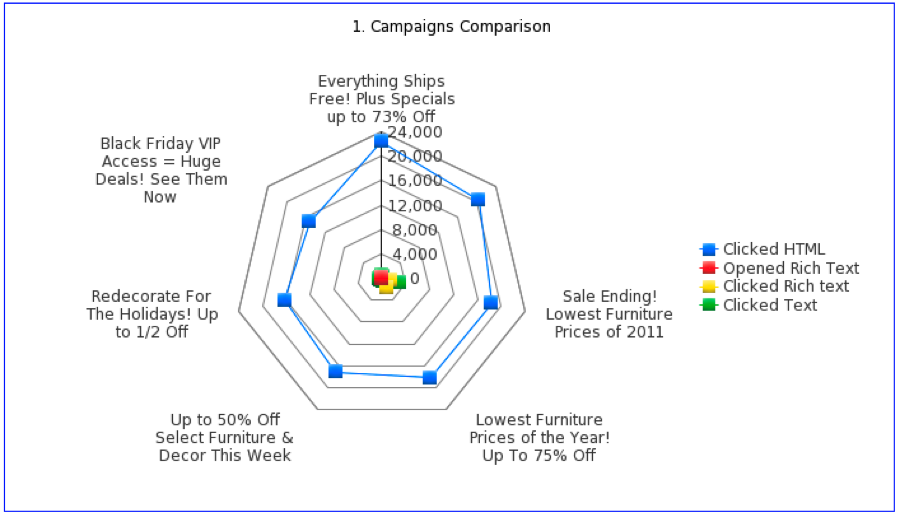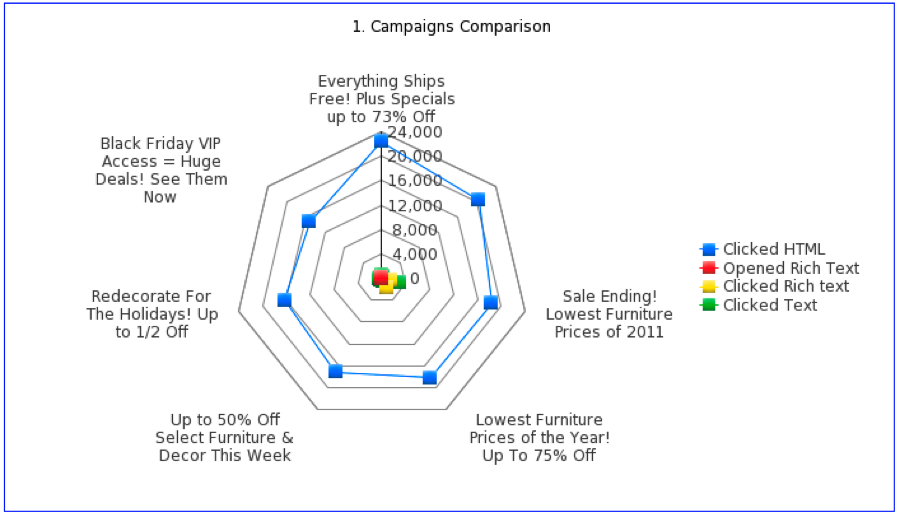Experimenting and Optimizing with the Email Content
Experimenting and optimizing with the email content. Once you have identified the customer segment that you want to target, the next monumental task in front of the direct marketing folks is to grab the attention of the audience and keep it on the message that you want to convey. The composition of the email, starting with the subject line, the images in the body, the language in the text all can be tweaked to create the right effect. In this role, you actually act like a movie director.
Just like a movie director uses the light, sound, background score, action scenes, the photographic angles, the expressions of the actors to create the right mood and setting for the story that he wants to tell, you need to harness all the skills that you have to engage the receiver.
Today, the email marketing industry is exploring the impact of the design by using multiple different versions of the email content optimization. Matching the right content with the right segment of receivers does magic in improving the response rates of the email campaign. With email, the ability to try different combinations of the creative and monitoring the responses is quite inexpensive and instant, so we can experiment to find the effective email combination that works for a segment of receivers.
Subject Line Testing and Analysis in Email Content
Generally, subject line testing is the first thing that can be tried with a significant impact. Some of the questions that one can try to answer by testing are:
- Is a short subject line better than a long one?
- What is the optimal size of the subject line?
- Is a question in the subject line better than a statement?
The objective here is to improve the open-to-sent metric. The more catchy the subject line, the more likely the receiver is to open your email. This is usually used with great effect by crime thriller writers—“S*x, Lies and Money” they say will always improve ratings. Perhaps, there is something to a catchy heading. Our objective is to measure the improvement in the open-to-sent rate. So, let us say that you have created a set of four segments of customers, whom you are going to send the same email. Look at some of the following headlines used by Amazon, WSJ.com, Bloomberg, etc.:
“Camera, Photo & Video Lightning Deals”
“Dear China, it’s over…”
“Is Best Buy a Better Sell?”
These subject lines tend to stand out in an already overcrowded inbox of the receiver.
Image Size Analysis
Another thing that has become very effective is adding images to the email content optimization that draw attention to themselves while conveying the product you are trying to sell. As a marketer, you want to test the impact of the size of the image. Perhaps a single image of the appropriate size, tells the whole story. Creating multiple versions of the email with varying images of different sizes can give you a set of different versions of the email. These can be sent to different groups of customers in a single segment. Use these versions of the email to monitor the response rates of the various versions.
Play with the Call to Action (BUY) Button
The next thing to work with is the “call to action” button that the receiver can click on. The size the color and position of this crucial element can make a difference between the receiver buying the product or moving on to the next email. Try to place this at the top of the page, or the lower-left corner, the center of the page, right below the image, etc.
When you combine these various elements of the email –header, images, call to action buttons, etc. you can come up with quite a few versions of the same email message.
Then you can send the traditional email you have been sending to one group of the chosen segment, and send the different versions to the rest of the groups of your segment. Most Email Service Providers (ESP) will allow you to manage this effectively. The key activity is to gather the data from these email blasts and store them in a database for analysis. In a short four weeks, you can have enough data to guide you into making some empirical decisions about the versions that work and the versions that can be discarded. This forms your baseline for monitoring the improvement in response rates by using the right version to the right segment. See figure 1.

Figure 1: Comparison of email campaigns by subject line
Technology needed
The merger of content versions and the segments of your target list needs you to track the responses over a period of time to find the optimum creative combination for each segment. So you need to track the individual email version sent, the rate of response of the receiver across the various response segments, and a large number of other variables that influence the outcome of your email campaign. You can’t achieve this without having a very large database for the marketing department. This database should focus on the individual receiver, the emails sent to them, their response to various creative combinations. The size of this database can be significant and performance can be a major consideration. Suddenly the meaning of ‘BIG DATA’ becomes abundantly clear to you. A typical email campaign database can store upwards of a few billion records over a 3-5 year period. To develop long-term insight, the marketing department needs to start with a long-term plan. If it is not possible to have a VLDB database in-house due to cost and IT support considerations, search for a vendor who can provide such a database for you. Without this kind of database, your ability to improve the response of the campaign is quite difficult, if not impossible.
The current trend of cloud-based services offers a very effective solution. In a future blog, I will review the characteristics of a database engine that is most suitable for marketing activities. Do you need a columnar or a row-oriented database engine, a massively parallel database engine? The database technology does uniquely differentiate the marketing analytics solution.
Build sentiment analysis models with Oyster
Whatever be your business, you can leverage Express Analytics’ customer data platform Oyster to analyze your customer feedback. To know how to take that first step in the process, press on the tab below.
Liked This Article?
Gain more insights, case studies, information on our product, customer data platform

